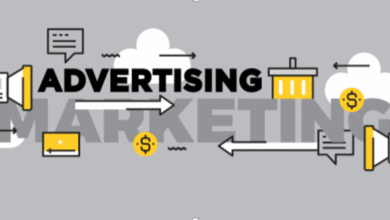Effective SaaS Sales Forecasting in a Dynamic Market

Within Software as a Service (SaaS), sales forecasting is a vital component of strategic decision-making, especially when negotiating a dynamic market with ever-changing conditions.
Gaining proficiency in SaaS sales forecasting is essential for long-term success as companies depend increasingly on SaaS solutions for their operational requirements.
This article explores the complexities of accurate SaaS sales forecasting and provides tips and tactics for prospering in a changing industry.
Understanding SaaS Sales Forecasting
SaaS sales forecasting is projecting future sales performance using market trends, historical data, and other contributing variables.
SaaS sales forecasting necessitates a better comprehension of recurring revenue streams, customer attrition rates, and subscription-based models than traditional sales models.
Essential Components of a Successful SaaS Sales Forecast
Data-driven Approach
Accurate data analysis and availability are essential for successful SaaS sales forecasting. Businesses may derive valuable insights from large datasets by utilizing sophisticated analytics technologies, which help with forecasting and decision-making.
See Also Breaking into the DJ Scene: Essential Strategies for Success
Cohort analysis and segmentation
Segmentation enables companies to group clients according to a range of factors, including use habits, industry, and organization size. Contrarily, cohort analysis allows comparing client groups across time to spot patterns and pinpoint areas that might need improvement.
Predictive Modeling
Using predictive modeling methods enables businesses to more accurately project future sales results. Businesses may make proactive changes to sales strategy and projections by using machine learning algorithms to find hidden trends in their data.
Continuous Iteration
Success in a changing market requires flexibility. A continuous iteration process is necessary for effective SaaS sales forecasting, in which estimates are periodically reviewed and improved in light of changing market conditions and up-to-date information.
Challenges and Solutions
SaaS sales forecasting is not without difficulties, despite its significance.
Unpredictable consumer behavior, volatile markets, and the quick speed of technical advancement are typical obstacles.
However, by taking proactive steps, these difficulties can be lessened:
Utilizing Predictive Analytics
Predictive analytics may help firms anticipate changes in market trends and consumer behavior. This allows for proactive modifications to sales projections and tactics.
Purchasing Systems for Customer Relationship Management (CRM)
Businesses may improve the accuracy of sales projections by tracking customer interactions, identifying patterns, and anticipating future demands by using strong CRM systems.
Collaborative Forecasting
A comprehensive approach to sales forecasting is fostered by promoting cross-functional collaboration between the finance, marketing, and sales departments. Through the utilization of combined knowledge and perceptions, companies may create more precise projections and coordinate plans among many divisions.
Embracing Innovation
The key to successful SaaS sales forecasting is innovation. Sales forecasting techniques need to change along with technology.
Newly developed technologies like machine learning, artificial intelligence (AI), and predictive analytics provide previously unheard-of chances to improve the precision and effectiveness of forecasting.
- AI-powered Forecasting: AI algorithms can evaluate enormous volumes of data in real-time, revealing insights that can be put to use and making remarkably accurate predictions about future sales patterns.
- Advanced Forecasting Models: Advanced models give organizations the skills they need to negotiate complicated market dynamics and make well-informed decisions. They range from time-series analysis to probabilistic forecasting.
Conclusion
Good SaaS sales forecasting becomes essential for business success in a market that is dynamic, unpredictable, and changing quickly.
Organizations may confidently and precisely handle market changes by embracing modern analytics approaches, using a data-driven strategy, and cultivating a continuous iteration culture.
Understanding sales forecasting is not just a competitive advantage, but also a strategic need as SaaS solutions become more and more essential to contemporary corporate operations.





